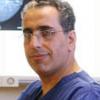A review by the leading charity, Breast Cancer Now has discovered that women can reduce their breast cancer risk by around 30%,.
The rates of breast cancer are rising – by current calculations this upward trend is expected to carry on over the next ten years.
Breast Cancer Now say there are three areas which women can help minimise their chances of developing breast cancer.
Lose weight
Miss Tania Adib, consultant gynaecologist and oncologist is patron of The Breast Cancer Haven charity. She is an expert in the menopause, and runs a dedicated menopause clinic at Twenty-five Harley Street.
Miss Adib has a special interest in cancer survivorship and quality of life after cancer treatment and is involved in managing the physical and emotional side effects of cancer treatments. In 2005 she was awarded an MD for her research into molecular profiling of the various genes that are implicated in epithelial ovarian cancer.
As breast cancer rates rise over the age of 40, the perimenopausal age, this is a good time to get your diet in order.
Miss Adib says: ‘A healthy diet is the cornerstone of optimum health. A healthy diet allows the body to adapt to the changes in the hormones over time. It's so important to eat healthy and consistently to keep blood sugar levels stable in the menopause – eating sugary foods causes huge swings in blood glucose may cause symptoms very similar to menopausal symptoms such as excessive sweating, anxiety, irritability, mood swings, tiredness, poor memory and difficulty in concentration. A high intake of sugary food has also been linked to breast cancer.” Miss Adib adds: “Making sure your diet is balanced with protein, good fats (such as those found in salmon) and complex carbohydrates, lots of fresh vegetables and fruit, and plenty of hydration will help ease menopausal symptoms and lower the risk of breast cancer.”
Soy is often recommended to help ease menopausal symptoms – but there is some debate over whether soy, which contains isoflavones, a mimic of oestrogen could feed breast cancer. The latest research seems to disprove the notion that soy is a danger factor. The advice is, continue enjoying a moderate amount of soy in the diet, unless otherwise advised by a doctor.
Get moving
Exercise is strongly correlated with lowering your risk of breast cancer. Studies have shown that active women slash their risk factor by 25% compared to inactive women. “Put aside at least 30 minutes three times a week to exercise,” advises Miss Adib. “It’s a great stress-buster - as well as helping keep your body strong, physical activity releases ‘feel good’ hormones, giving you a much-needed mood boost!” Of course, this will also help you lose weight, so it’s an easy win for anyone wanting to reduce their risk cancer risk.
Exercise is an all-round tonic for a plethora of different diseases, including heart disease, osteoporosis, Alzheimer’s and diabetes, all of which rise in risk as we get older. So are some exercises better than others?
Weight lifting is a good option. You don’t have to hoick massive weights – go to a gym induction or a personal trainer and they will choose the most suitable weight for your needs.
Miss Adib comments: “Use weights to strengthen the muscles, and cardio – that’s any activity that increases heart rate and respiration while using your muscles – is good for the heart
Cut down on alcohol
With rates of drinking going up – a study published in the BMJ last year found that women aged 15 to 19 were a third more likely than men of that age to be admitted to A&E for alcohol poisoning in 2013/14 - drinking less is a lifestyle change many of us need to make.
Another indicator for this trend towards heavy drinking was that the study unearthed that there has also been a 65 per cent rise in the number of over-60s women treated for alcoholism in the last five years. “It’s clear that cutting down alcohol has clear benefits for women - including lowering their risk of breast cancer,” says Miss Adib.
Make an appointment for a consultation at Twenty-five Harley Street.
Tel: 020 3883 9525
Email: appointments@25harleystreet.co.uk
Visit: Twenty-five Harley Street, 25 Harley Street, London, W1G 9QW
The time of a woman’s life when her ovaries stop releasing an egg (ovum) on a monthly cycle, and her periods cease
Full medical glossary








